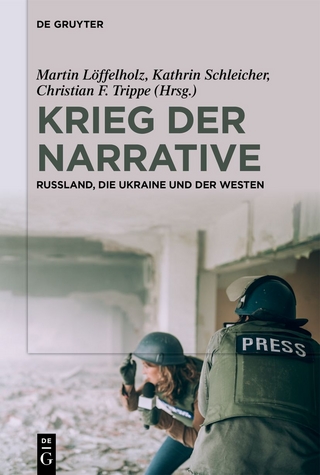
Scaling the Balkans
Brill (Verlag)
978-90-04-35889-8 (ISBN)
Scaling the Balkans puts in conversation several fields that have been traditionally treated as discrete: Balkan studies, Ottoman studies, East European studies, and Habsburg and Russian studies. By looking at the complex interrelationship between countries and regions, demonstrating how different perspectives and different methodological approaches inflect interpretations and conclusions, it insists on the heuristic value of scales. The volume is a collection of published and unpublished essays, dealing with issues of modernism, backwardness, historical legacy, balkanism, post-colonialism and orientalism, nationalism, identity and alterity, society-and nation-building, historical demography and social structure, socialism and communism in memory, and historiography.
Maria Todorova, PhD (1977) is the Gutgsell Professor of History and CAS Professor at the University of Illinois, Urbana-Champaign. She is the author of numerous monographs, articles and edited volumes, including Imagining the Balkans (1997, 2009, translated in 14 languages).
List of Illustrations, Tables, Figures and Maps
Introduction
Part 1: Concepts
Section 1: Modernism, Backwardness and Legacy
1 The Trap of Backwardness: Modernity, Temporality and the Study of Eastern European Nationalism
2 Modernism
3 Historical Legacies between Europe and the Near East
Section 2: Balkanism, Postcolonialism and Orientalism
4 Balkan
5 Balkanism and Postcolonialism or On the Beauty of the Airplane View
6 The Balkans: from Discovery to Invention
7 The Balkans: from Invention to Intervention
8 Does Russian Orientalism Have a Russian Soul? A Contribution to the Debate between Nathaniel Knight and Adeeb Khalid
Section 3: Nationalism, Identity and Alterity
9 Is There Weak Nationalism and Is It a Useful Category?
10 Is “the Other” a Useful Cross-cultural Concept? Some Thoughts on Its Implementation to the Balkan Region
11 Isn’t Central Europe Dead? Comments on Iver Neumann’s “Forgetting the Central Europe of the 1980s”
12 What Is or Is There a Balkan Culture, and Do or Should the Balkans Have a Regional Identity?
Part 2: Structures, Processes and Events
Section 1: Demography and Social Structure
13 European Population History: the Balkans
14 Situating the Family of Ottoman Bulgaria within the European Pattern
15 On the Epistemological Value of Family Models: the Balkans within the European Pattern
16 Historical Tradition and Transformation in Bulgaria: Women’s Issues, Feminist Issues
Section 2: Nation- and Society-Building
17 The Course and Discourses of Bulgarian Nationalism
18 Language as a Cultural Unifier in a Multilingual Setting: the Bulgarian Case during the Nineteenth Century
19 Identity (Trans)formation among Bulgarian Muslims
20 Midhat Pasha and the Bulgarians
21 Improbable Maverick or Typical Conformist? Seven Thoughts on the New Bulgaria
Section 3: Historiography and Memory
22 East European Studies in the US: Thematic and Methodological Problems
23 The Ottoman Menace in Post-Habsburg Historiography
24 Conversion to Islam as a Trope in Bulgarian Historiography, Fiction and Film
25 The Balkan Wars in Memory: the Carnegie Report and Trotsky’s War Correspondence
Section 4: Socialism and Communism in Memory
26 Shared or Contested Heritage? Commemorating Socialism and Communism in Europe
27 1917 in the Balkans: Divergent “Horizons of Expectation”
28 Was there Civil Society and a Public Sphere under Socialism? The Debates around Vasil Levski’s Alleged Reburial in Bulgaria
29 Blowing Up the Past: the Mausoleum of Georgi Dimitrov as Lieu de Mémoire
30 Remembering Communism: Similar Trajectories, Different Memories
Index
| Erscheinungsdatum | 25.09.2018 |
|---|---|
| Reihe/Serie | Balkan Studies Library ; 24 |
| Verlagsort | Leiden |
| Sprache | englisch |
| Maße | 155 x 235 mm |
| Gewicht | 1180 g |
| Themenwelt | Geisteswissenschaften ► Geschichte ► Geschichtstheorie / Historik |
| Geisteswissenschaften ► Geschichte ► Regional- / Ländergeschichte | |
| Sozialwissenschaften ► Politik / Verwaltung ► Vergleichende Politikwissenschaften | |
| ISBN-10 | 90-04-35889-7 / 9004358897 |
| ISBN-13 | 978-90-04-35889-8 / 9789004358898 |
| Zustand | Neuware |
| Haben Sie eine Frage zum Produkt? |
aus dem Bereich


